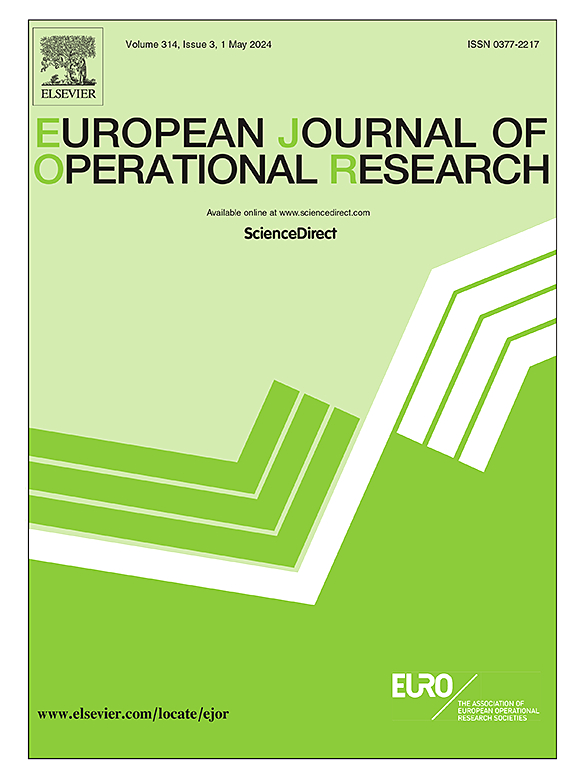An efficient hybridization of Graph Representation Learning and metaheuristics for the Constrained Incremental Graph Drawing Problem
IF 6
2区 管理学
Q1 OPERATIONS RESEARCH & MANAGEMENT SCIENCE
引用次数: 0
Abstract
Hybridizing machine learning techniques with metaheuristics has attracted significant attention in recent years. Many attempts employ supervised or reinforcement learning to support the decision-making of heuristic methods. However, in some cases, these techniques are deemed too time-consuming and not competitive with hand-crafted heuristics. This paper proposes a hybridization between metaheuristics and a less expensive learning strategy to extract the latent structure of graphs, known as Graph Representation Learning (GRL). For such, we approach the Constrained Incremental Graph Drawing Problem (C-IGDP), a hierarchical graph visualization problem. There is limited literature on methods for this problem, for which Greedy Randomized Search Procedures (GRASP) heuristics have shown promising results. In line with this, this paper investigates the gains of incorporating GRL into the construction phase of GRASP, which we refer to as Graph Learning GRASP (GL-GRASP). In computational experiments, we first analyze the results achieved considering different node embedding techniques, where deep learning-based strategies stood out. The evaluation considered the primal integral measure that assesses the quality of the solutions according to the required time for such. According to this measure, the best GL-GRASP heuristics demonstrated superior performance than state-of-the-art literature GRASP heuristics for the problem. A scalability test on newly generated denser instances under a fixed time limit further confirmed the robustness of the GL-GRASP heuristics.图表示学习和元启发式的有效混合用于约束增量图绘制问题
近年来,机器学习技术与元启发式技术的结合引起了人们的广泛关注。许多尝试使用监督或强化学习来支持启发式方法的决策。然而,在某些情况下,这些技术被认为太耗时,与手工制作的启发式没有竞争力。本文提出了一种混合元启发式和一种更便宜的学习策略来提取图的潜在结构,称为图表示学习(GRL)。为此,我们研究了约束增量图绘制问题(C-IGDP),这是一个分层图可视化问题。关于这个问题的方法的文献有限,其中贪婪随机搜索程序(GRASP)启发式方法显示了有希望的结果。与此相一致,本文研究了将GRL纳入抓取构建阶段的收益,我们称之为图学习抓取(GL-GRASP)。在计算实验中,我们首先分析了考虑不同节点嵌入技术的结果,其中基于深度学习的策略尤为突出。评估考虑了根据所需时间来评估解决方案质量的原始积分度量。根据这一测量,最佳的GL-GRASP启发式方法比最先进的文献GRASP启发式方法表现出更好的性能。在固定时间限制下对新生成的更密集实例进行可扩展性测试,进一步验证了GL-GRASP启发式算法的鲁棒性。
本文章由计算机程序翻译,如有差异,请以英文原文为准。
求助全文
约1分钟内获得全文
求助全文
来源期刊

European Journal of Operational Research
管理科学-运筹学与管理科学
CiteScore
11.90
自引率
9.40%
发文量
786
审稿时长
8.2 months
期刊介绍:
The European Journal of Operational Research (EJOR) publishes high quality, original papers that contribute to the methodology of operational research (OR) and to the practice of decision making.
 求助内容:
求助内容: 应助结果提醒方式:
应助结果提醒方式:


